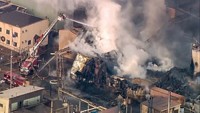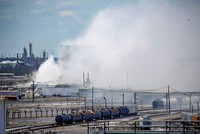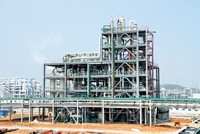Advertisement
Grab your lab coat. Let's get started
Welcome!
Welcome!
Create an account below to get 6 C&EN articles per month, receive newsletters and more - all free.
It seems this is your first time logging in online. Please enter the following information to continue.
As an ACS member you automatically get access to this site. All we need is few more details to create your reading experience.
Not you? Sign in with a different account.
Not you? Sign in with a different account.
ERROR 1
ERROR 1
ERROR 2
ERROR 2
ERROR 2
ERROR 2
ERROR 2
Password and Confirm password must match.
If you have an ACS member number, please enter it here so we can link this account to your membership. (optional)
ERROR 2
ACS values your privacy. By submitting your information, you are gaining access to C&EN and subscribing to our weekly newsletter. We use the information you provide to make your reading experience better, and we will never sell your data to third party members.
Specialty Chemicals
Shortages of trichlor, a popular pool sanitizer, threaten summer fun
Alternative sanitizers are available, but they aren’t as convenient
by Craig Bettenhausen
May 6, 2021
| A version of this story appeared in
Volume 99, Issue 17

Just as the northern hemisphere is gearing up for summer, a shortage of the water treatment chemical trichloroisocyanuric acid threatens to rain on the pool parties.
Trichlor, as the sanitizer is commonly known, is a popular choice for backyard pools because it is easy to use. But a fire last summer at a BioLab trichlor factory in Westlake, Louisiana, is already causing shortages and price hikes, and the problem is likely to get worse in the coming months.
US homeowners will build about 110,000 pools in 2021, according to the pool supply company Pool Corp. That’s an increase of more than 20% from construction last year.

The BioLab plant normally makes the majority of North America’s trichlor supply, according to a report by Goldman Sachs, but was destroyed when Hurricane Laura hit the US Gulf Coast in August. KIK Consumer Products, which owns BioLab, says it is rebuilding the facility at a cost of about $170 million. The firm expects to resume operations by the spring of 2022 with 30% more capacity than it had before the hurricane.
In the meantime, prices are up and supplies are unreliable, according to a manager at a mid-Atlantic pool chemical distributor, who did not have permission to speak on the record. Competitors Clearon and Occidental Chemical also make trichlor and the related dichloroisocyanuric acid (dichlor) but haven’t compensated for the BioLab closure, the distributor says.
Trichlor prices are already 37% higher than they were this time last year—an increase that may reach 58% in June–August, according to the market research firm IHS Markit. Dichlor prices are also up, though the chemical was not made at the Westlake plant, according to KIK.
Like most pool-sanitizing chemicals, trichlor is a way to add hypochlorous acid—the chlorine bleach HClO—to water. HClO breaks down quickly into hydrochloric acid and oxygen in the sun. Trichlor gets around that problem by releasing HClO along with cyanuric acid. Cyanuric acid absorbs some ultraviolet radiation and forms transient complexes with HClO that are less prone to photodegradation.
Trichlor tablets dominate the home pool market because users can maintain chlorine levels simply by dropping a few into the water every 4–5 days. Other options need daily attention and may require complex, expensive equipment.





Join the conversation
Contact the reporter
Submit a Letter to the Editor for publication
Engage with us on Twitter